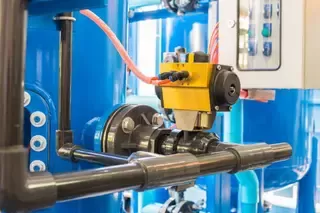Notifications

6 minutes, 1 second
-72 Views 0 Comments 0 Likes 0 Reviews

China Control valves are vital components in fluid systems, responsible for regulating flow, pressure, and temperature across industries such as oil and gas, chemical processing, power generation, and water treatment. Due to their critical role, ensuring their reliability and longevity is paramount to avoiding costly downtime, safety incidents, and unexpected repair expenses.
Although designed for durability, control valves inevitably undergo wear and tear caused by harsh operating environments and continuous cycling. However, many common failures can be minimized or prevented through proactive care and strategic operation. This article explores typical valve issues, practical approaches to extend valve lifespan, and maintenance strategies that preserve valve performance and efficiency.
1. Internal Leakage
Internal leakage happens when a valve fails to fully close, allowing fluid to pass even in the shut-off position. This issue is particularly challenging to detect since there are usually no external signs.
Causes:
Improper actuator or positioner calibration
Worn seals, seats, or internal components
Incorrect Distributed Control System (DCS) configuration
Debris trapped in sealing surfaces
Mitigation:
Regular inspection by skilled technicians, timely replacement of damaged parts, and ongoing calibration and monitoring are essential to prevent recurrence.
2. External Leakage
External leakage involves fluid escaping from the valve body or bonnet area, which is often easier to detect visually or by pressure monitoring.
Causes:
Deteriorated packing or seals
Material incompatibility with fluid media
Wear from thermal cycling or vibration
Loose bolts or mechanical deformation
Mitigation:
Replace worn packing and gaskets, verify material compatibility, tighten fasteners properly, and conduct vibration analysis when necessary.
3. Sticking Valve
A sticking valve responds sluggishly or not at all to control signals, impairing process control.
Causes:
Over-tightened packing increasing friction
Corrosion on stems or internal parts
Build-up of particulate matter
Mitigation:
Disassemble and clean valve internals, lubricate moving components, adhere to correct torque specifications on packing, and install upstream filters to reduce contamination.
1. Start Operation at Wide Valve Openings
Operating the valve near fully open (e.g., 90%) during initial service localizes erosion to less critical areas like the spool head. As wear progresses, throttling range can be gradually extended, spreading wear more evenly and potentially increasing valve life by 1 to 5 times compared to constant operation at partial openings.
2. Reduce Valve Resistance Ratio
Lowering pressure drop across the valve decreases internal stress and erosion. This can be achieved by:
Adding orifice plates downstream
Partially closing manual valves elsewhere to balance flow
Selecting valves that require a larger opening under normal conditions
These measures reduce cavitation and extend valve longevity.
3. Downsize Valves to Increase Operating Range
Oversized valves tend to operate at small openings, resulting in unstable control and localized wear. Using smaller valves or trimming existing valves with reduced flow coefficients promotes stable, larger openings and reduces wear.
4. Redirect Wear to Less Critical Areas
Adjusting flow paths or trim geometry can shift erosion away from vital sealing surfaces to sacrificial zones designed to absorb damage, protecting key components and prolonging valve life.
5. Reverse Flow Direction (When Allowed)
Changing the flow from "flow-to-open" to "flow-to-close" can relocate erosive forces away from sealing surfaces to less sensitive areas, preserving critical parts and reducing damage.
1. Passive (Reactive) Maintenance
Repairs performed after failure. Necessary in emergencies but often leads to unplanned downtime and higher costs.
2. Preventive Maintenance
Scheduled inspections and upkeep such as:
Cleaning valve internals
Flushing pipelines
Checking seals and packing
Lubricating stems
Tightening fasteners
Minimizing vibration and mechanical stress
Regular preventive care improves reliability and reduces unexpected failures.
3. Predictive Maintenance
Advanced monitoring techniques include:
Smart positioners and control modules for behavior tracking
Vibration and temperature sensors for real-time condition assessment
Acoustic emission analysis for leak detection
Integration with asset management systems for trend analysis
Predictive maintenance enables early problem detection and optimized inspection schedules.
Extending the service life of control valves requires a blend of smart operational practices, thoughtful design choices, and disciplined maintenance. Understanding common failure modes, proactively reducing wear, and leveraging modern diagnostic tools can significantly enhance valve reliability and efficiency.
Whether handling steam, gas, water, or corrosive fluids, these strategies help maximize valve uptime, reduce operating costs, and safeguard overall process performance.
Key Takeaway: Control valves are long-term assets—treat them with foresight and care to ensure consistent, reliable operation for years to come.Gotta know about Google SEO.

